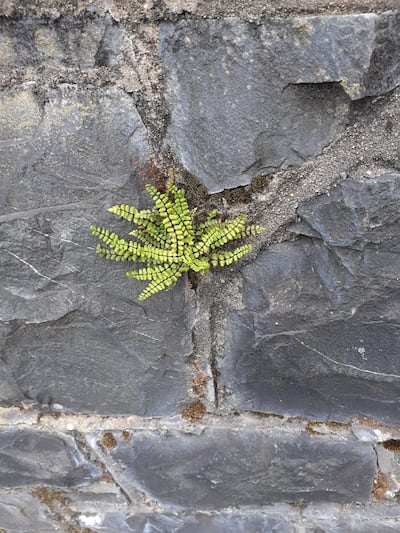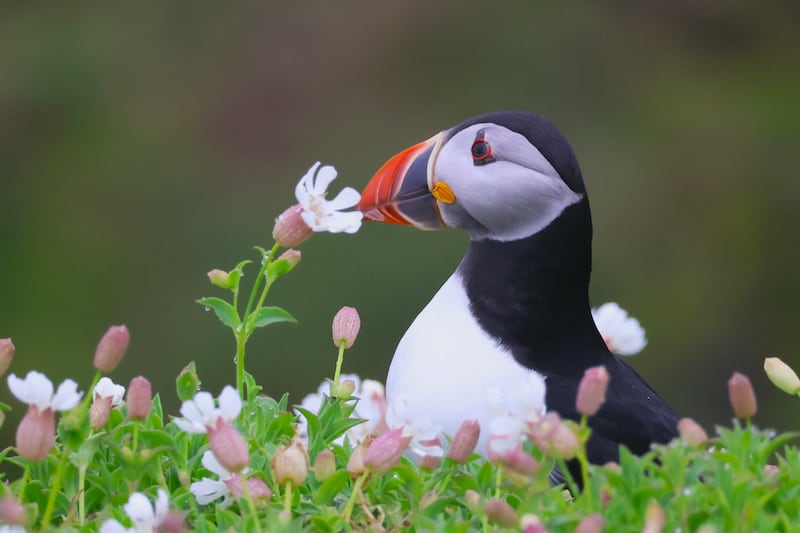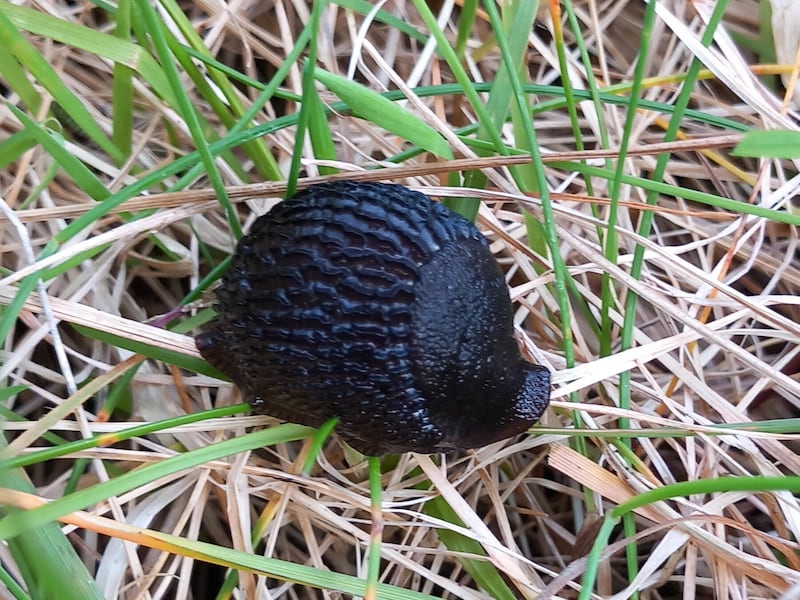Brian Hegarty of Inishowen Wildlife Club took this excellent picture. He watched this male kingfisher visit the nest three times with this same brown trout. Maybe it was just too big for the chicks.

This grew in part of my lawn, which I had left unmowed for May. Could an animal or bird have brought in seeds and sown it? John Smith, Clonbur, Co Galway
Animals and birds have nothing to do with this. This is a lovely photograph of a bee orchid, part of the natural flora of calcicole soils, what you have on the limestone-rich soil between loughs Mask and Corrib. Orchids maintain a very complicated symbiotic relationship with fungal strands in the soil in order to grow. Continuous close mowing all through early summer means that these conditions are interrupted, so the orchids can’t grow and flower. But the orchid seeds can remain – viable – in the soil for decades, just waiting for more civilised behaviour from you in order to be able to burst forth into those incomparable flowers you enjoyed during No Mow May.
I noticed what I thought was a tiny fern on a wall on the Malone Road in south Belfast. Is it a fern? It was about 5cm across so very small. I hadn’t seen one like this before. Oliver Hunter, Belfast
READ MORE
It is indeed a fern, maidenhair spleenwort – in Latin, Asplenium trichomanes. It is a native Irish fern that grows on old walls, cliffs and in crevices on rock rich in lime. The wall in question must have lime-rich mortar to enable this lovely delicate fern to grow.

We spent a day on the Saltees last weekend and brought back hundreds of photos, including this one of a puffin taking time out to smell the flowers. Terry Devitt, Co Dublin
It is indeed a lovely picture of a puffin among the cliff sward of Meadow Campion on Great Saltee Island in Co Wexford towards the end of May. It is stretching things a bit, though, to interpret it as a bird smelling a flower. Puffins build their nests at the bottom of burrows in such flower-rich cliff tops where there is soil deep enough to facilitate a burrow. Here they lay just one egg, which they incubate during June, and then come ashore at dusk each evening for four weeks to feed the growing chick with a meal of sand eels. Puffin numbers are dropping in Ireland as the sand eel colonies move further north, due to our warming oceans. This species is red-listed, according to Birds of Conservation Concern in Ireland 2020-2026, and is of high conservation value as a result.

I found this on my lawn. It is cream coloured with a raised little globe on top. Is it widespread? Frank Smyth, Co Dublin
With its pinkish buff colour, central raised area and puckered cap edge, this is the fairy ring mushroom, Marasmius oreades. It occurs as “fairy rings” in all kinds of grassland and kills grass.

I took this photograph of a black slug in the grass today in Belmullet. I was intrigued by the beauty and the symmetry of the vermiculated shiny black skin. Could you let us know where in the ecosystem this animal sits, or perhaps crawls, and for what purpose? Bobby Carty, Co Mayo
Why should slugs have to justify their existence to us? What purpose have humans, after all? Slugs are herbivores, which feed delightedly on our soft garden plants, and in turn are dined upon by hedgehogs, shrews, ducks and frogs.

Please submit your nature query, observation, or photo with a location, via irishtimes.com/eyeonnature













